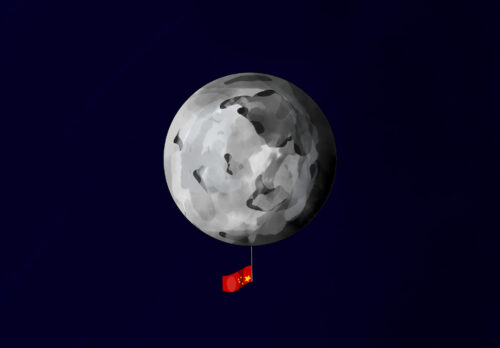Three Chinese astronauts dock at China’s new space station for three-month stay
The third of 11 launches this year to build the Chinese Space Station (Tiangong) went off without a hitch today. A trio of Chinese astronauts will spend three months aboard the station to test systems and prepare for more construction to complete the station by the end of 2022.

Today, China completed the third of 11 launches to finish the construction of its Chinese Space Station (CSS), also known as Tiangong (天宫 tiān gōng; “heavenly palace”).
Three Chinese astronauts — Niè Hǎishèng 聂海胜 (56), Liú Bómíng 刘伯明 (54), and Tāng Hóngbō 汤洪波 (45) — docked at the space station after a six-hour flight taking off from the Gobi Desert, Xinhua reported, noting the multiple milestones marked by the mission:
It is China’s seventh crewed mission to space and the first during the construction of China’s space station. It is also the first in nearly five years after the country’s last manned mission…
They will stay in orbit for three months, setting a new record for China’s manned space mission duration. The current 33-day record was kept by the Shenzhou-11 crew in 2016.
During their three-month stay, Nie, Liu, and Tang will tackle objectives that “include extravehicular activities using EVA [extravehicular activity] suits delivered by Tianzhou-2,” the second CSS launch last month, which carried over four tons of cargo, as well as “testing performance of a large robotic arm and verification of a regenerative life support system,” SpaceNews reports.
The first launch to build the CSS, back in April, was just one of several major milestones for China’s space program in the past year. Others include a lunar sample retrieval mission, the final satellite launch for BeiDou, China’s GPS competitor, and the successful landing of a rover on Mars, a mission far more difficult than a lunar landing.
- The Mars rover, named Zhurong, has since sent back multiple photos from the surface of the Red Planet, including a “selfie” taken with a remote camera.
The CSS is set to be fully operational by the end of 2022, with additional modules and further manned missions.
For more on China’s space program and future ambitions, see:
- Journalist Andrew Jones on China’s space program / Sinica Podcast
- China, Russia reveal roadmap for international moon base / SpaceNews






